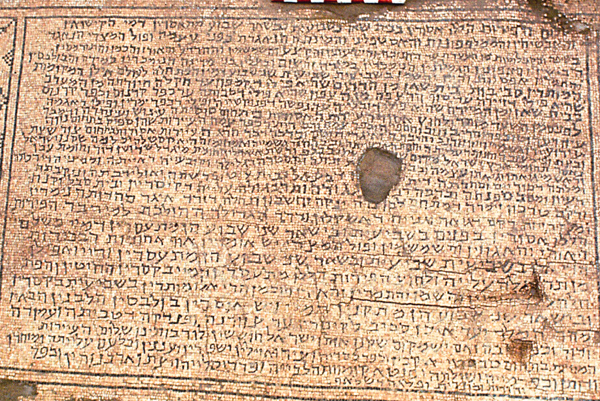Image Details

Zev Radovan, Jerusalem
“Shalom! These fruits are forbidden at Beth-Shean in the seventh year” begins this 14-foot-wide, 29-line Hebrew inscription from the floor of the entry hall of the sixth-century C.E. synagogue at Rehov (see plan), in Israel’s fertile Beth-Shean Valley. The wordy mosaic details agricultural laws incumbent on Jews dwelling in the region. Quoting heavily from rabbinic literature composed locally, the mosaic is the earliest extant version of a rabbinic text (and the longest synagogue inscription ever found in Israel). The text defines the borders of the Land of Israel as settled by exiles returning from Babylon; it lists nearby pagan towns where the rabbinic laws of tithing and sabbatical years (every seventh year, when the land must lie fallow [Leviticus 25:4]) are not binding; and it lists the towns where they are required. The greeting shalom—“peace”—at the beginning of the inscription suggests that it might be a copy of a letter sent to the town in response to questions about the law. Or it might just be a greeting to the readers of the inscription.
